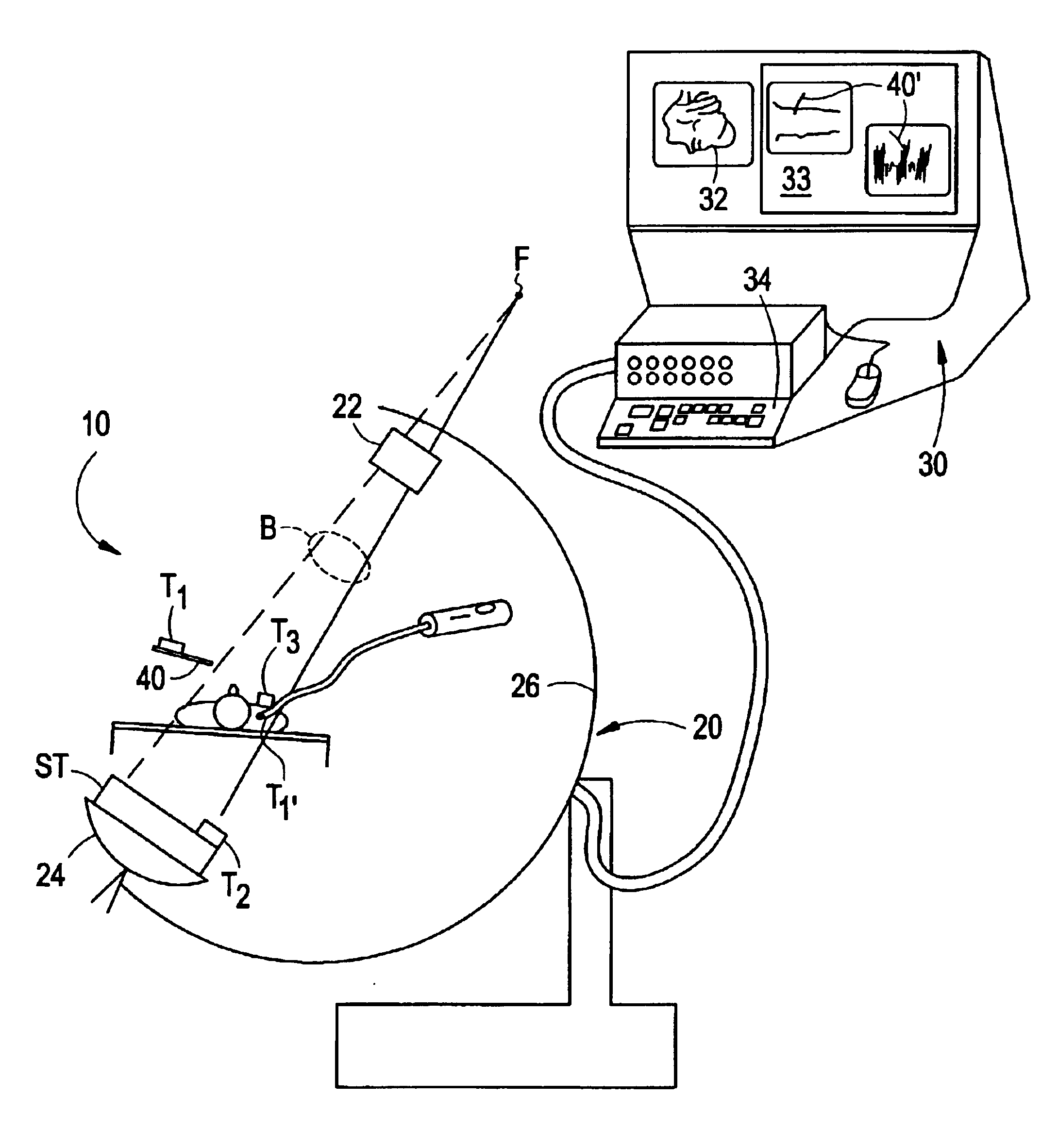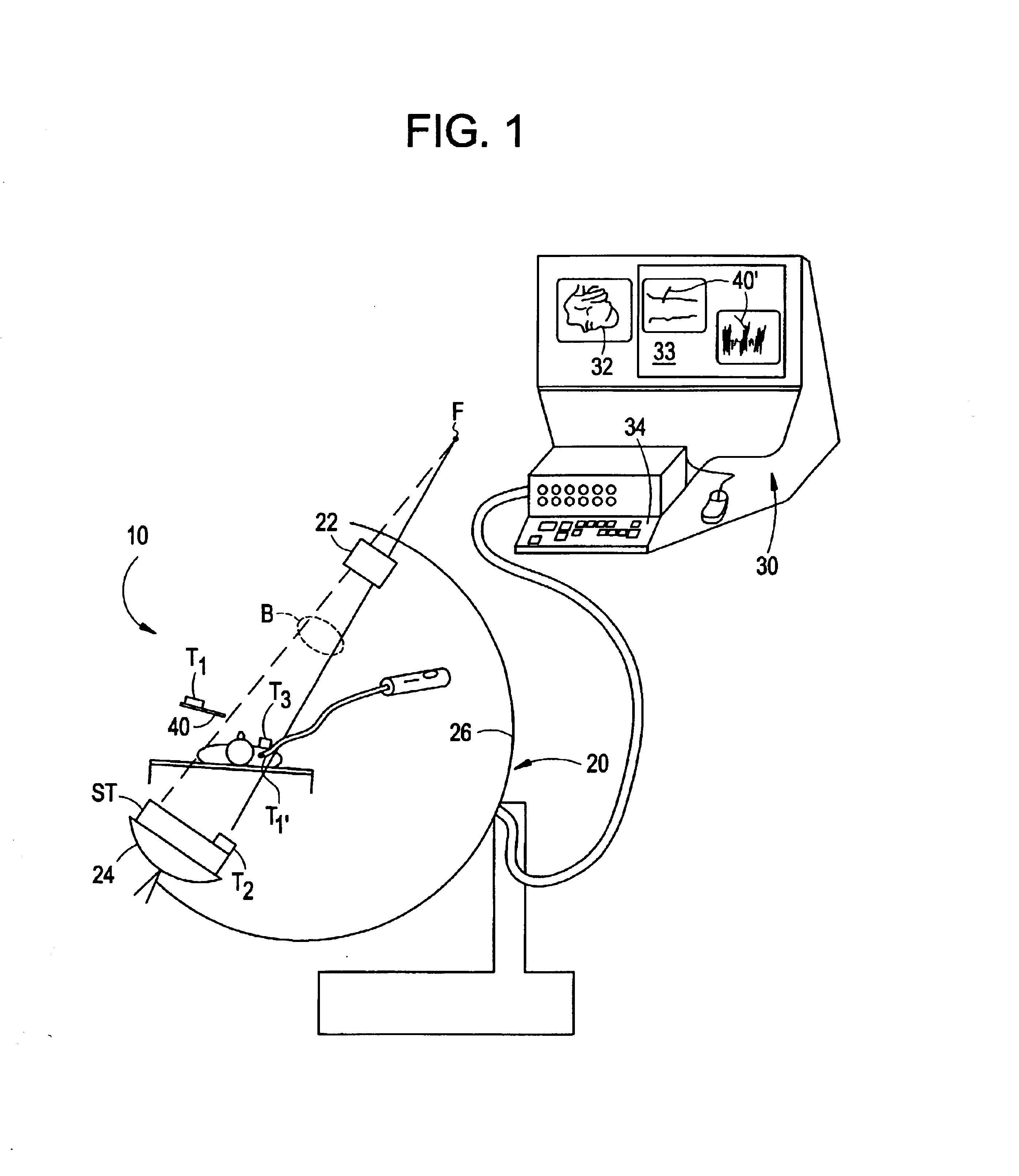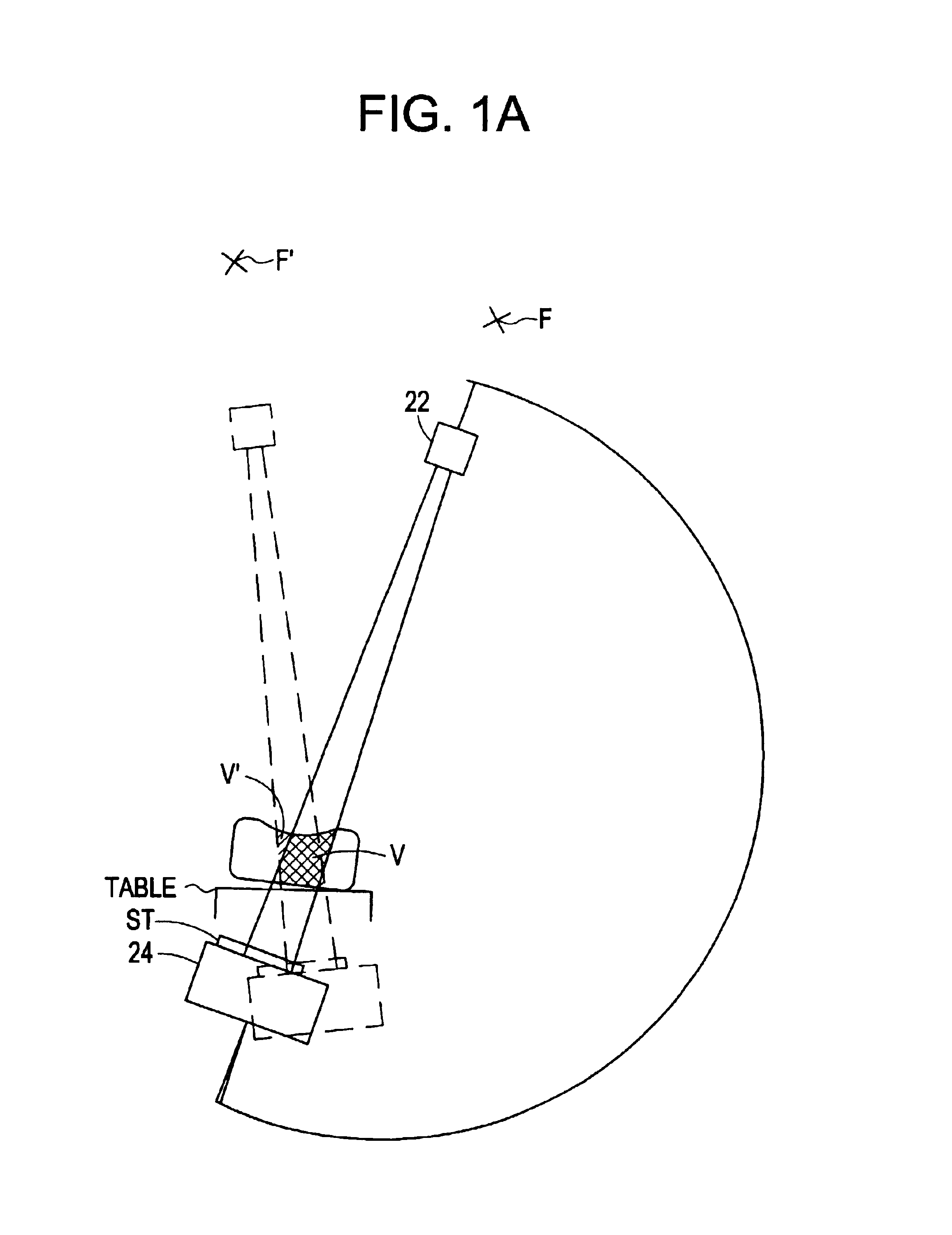Fluoroscopic tracking and visualization system
- Summary
- Abstract
- Description
- Claims
- Application Information
AI Technical Summary
Benefits of technology
Problems solved by technology
Method used
Image
Examples
Embodiment Construction
FIG. 1 illustrates elements of a basic embodiment of a system 10 in accordance with the present invention for use in an operating room environment. As shown, the system 10 includes a fluoroscope 20, a work station 30 having one or more displays 32 and a keyboard / mouse or other user interface 34, and a plurality of tracking elements T1, T2, T3. The fluoroscope 20 is illustrated as a C-arm fluoroscope in which an x-ray source 22 is mounted on a structural member or C-arm 26 opposite to an x-ray receiving and detecting unit, referred to herein as an imaging assembly 24. The C-arm moves about a patient for producing two dimensional projection images of the patient from different angles The patient remains positioned between the source and the camera, and may, for example, be situated on a table or other support, although the patient may move. The tracking elements, described further below, are mounted such that one element T1 is affixed to, incorporated in or otherwise secured against m...
PUM
 Login to View More
Login to View More Abstract
Description
Claims
Application Information
 Login to View More
Login to View More - R&D
- Intellectual Property
- Life Sciences
- Materials
- Tech Scout
- Unparalleled Data Quality
- Higher Quality Content
- 60% Fewer Hallucinations
Browse by: Latest US Patents, China's latest patents, Technical Efficacy Thesaurus, Application Domain, Technology Topic, Popular Technical Reports.
© 2025 PatSnap. All rights reserved.Legal|Privacy policy|Modern Slavery Act Transparency Statement|Sitemap|About US| Contact US: help@patsnap.com



